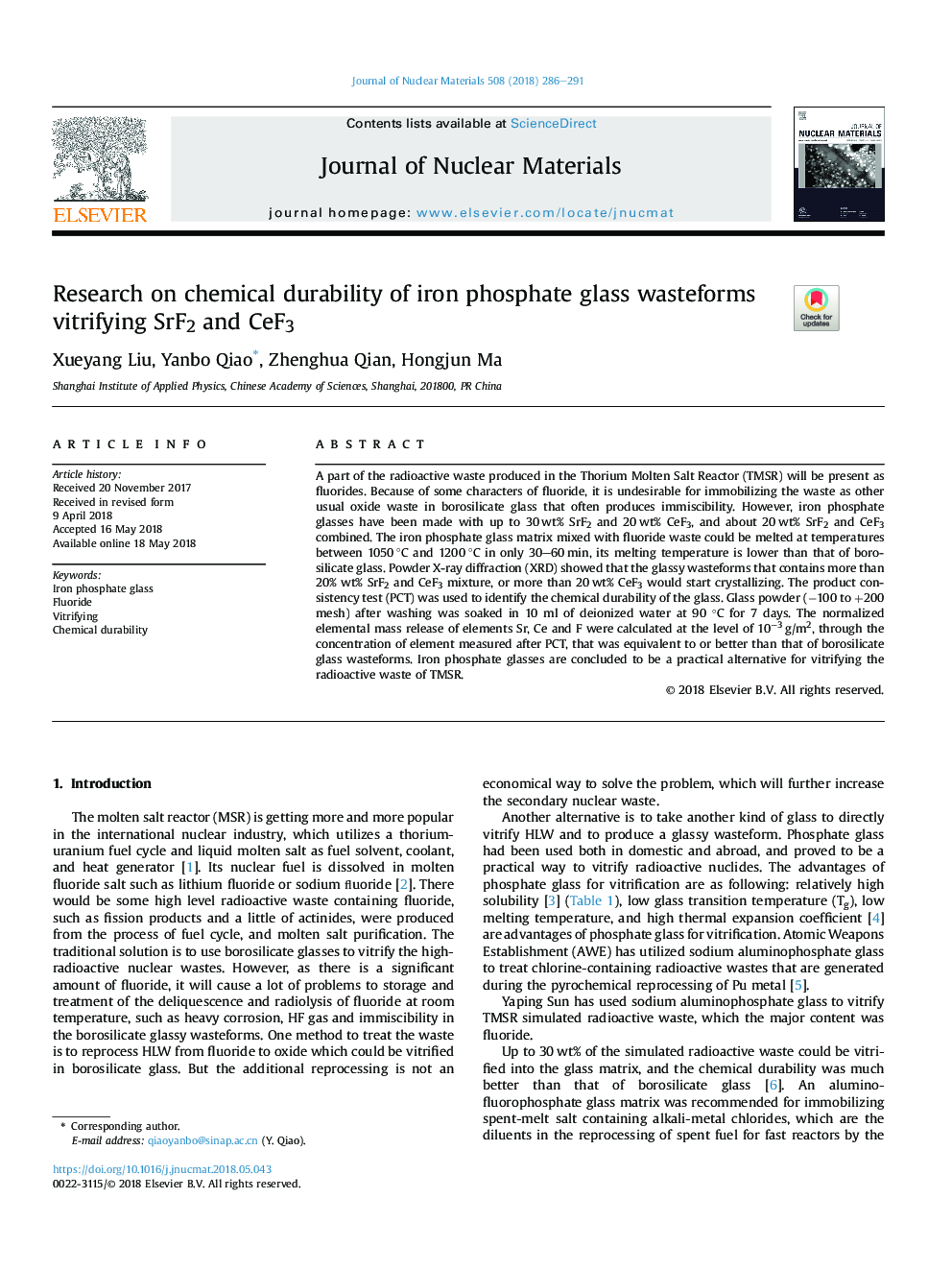| کد مقاله | کد نشریه | سال انتشار | مقاله انگلیسی | نسخه تمام متن |
|---|---|---|---|---|
| 7963024 | 1514138 | 2018 | 6 صفحه PDF | دانلود رایگان |
عنوان انگلیسی مقاله ISI
Research on chemical durability of iron phosphate glass wasteforms vitrifying SrF2 and CeF3
دانلود مقاله + سفارش ترجمه
دانلود مقاله ISI انگلیسی
رایگان برای ایرانیان
کلمات کلیدی
موضوعات مرتبط
مهندسی و علوم پایه
مهندسی انرژی
انرژی هسته ای و مهندسی
پیش نمایش صفحه اول مقاله

چکیده انگلیسی
A part of the radioactive waste produced in the Thorium Molten Salt Reactor (TMSR) will be present as fluorides. Because of some characters of fluoride, it is undesirable for immobilizing the waste as other usual oxide waste in borosilicate glass that often produces immiscibility. However, iron phosphate glasses have been made with up to 30â¯wt% SrF2 and 20â¯wt% CeF3, and about 20â¯wt% SrF2 and CeF3 combined. The iron phosphate glass matrix mixed with fluoride waste could be melted at temperatures between 1050â¯Â°C and 1200â¯Â°C in only 30-60â¯min, its melting temperature is lower than that of borosilicate glass. Powder X-ray diffraction (XRD) showed that the glassy wasteforms that contains more than 20% wt% SrF2 and CeF3 mixture, or more than 20â¯wt% CeF3 would start crystallizing. The product consistency test (PCT) was used to identify the chemical durability of the glass. Glass powder (â100 to +200 mesh) after washing was soaked in 10 ml of deionized water at 90 °C for 7 days. The normalized elemental mass release of elements Sr, Ce and F were calculated at the level of 10â3â¯g/m2, through the concentration of element measured after PCT, that was equivalent to or better than that of borosilicate glass wasteforms. Iron phosphate glasses are concluded to be a practical alternative for vitrifying the radioactive waste of TMSR.
ناشر
Database: Elsevier - ScienceDirect (ساینس دایرکت)
Journal: Journal of Nuclear Materials - Volume 508, September 2018, Pages 286-291
Journal: Journal of Nuclear Materials - Volume 508, September 2018, Pages 286-291
نویسندگان
Xueyang Liu, Yanbo Qiao, Zhenghua Qian, Hongjun Ma,